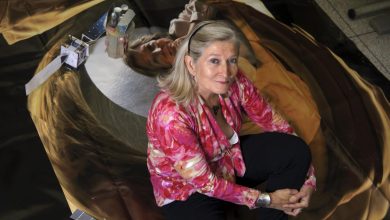Dark matter, from Gran Sasso to Australia
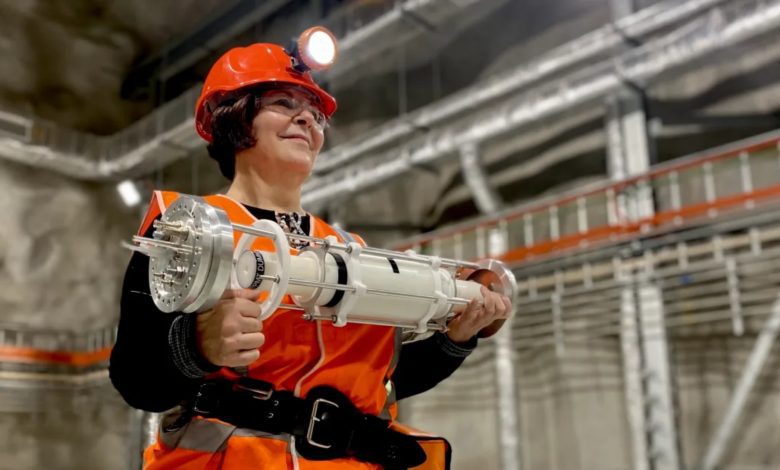
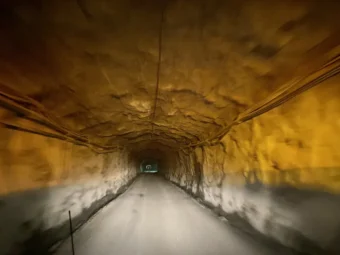
One of the 1 kilometer long Stawell Gold Mine tunnels that lead to the underground Stawell Physics Laboratory. Credits: Imogen Kramp
One of the most important tourist attractions offered to its visitors is the city of Stawell, a small rural village about 240 kilometers from Melbourne, Australia, which is Stawell Gold Mine. It is an ancient gold mine – the largest in the federal state Victoria – Its tunnels were dug by indigenous peoples (Wotjobaluk, Jaadwa, Jadawadjali, Wergaia, Jupagulk) Starting in 1850.
located inside Grampians National ParkThe site is visited every year by thousands of tourists who are interested not only in the history of mining but also in the art of mining precious metals. In addition to visitors, it is also possible to meet physicists among the kilometre-long rocky tunnels of the Gold Field. Particle physicists, to be exact. Through nearly ten kilometers of tunnels dug deep into the earth, and thus down to one kilometer below its surface, we actually arrive at a chamber 33 meters long, 10 meters wide and 14 high that houses the Stawell Geophysical Laboratory (Sobel), an underground physics laboratory where we will hunt down the elusive matter that makes up 85% of all matter in the universe: dark matter.
Completed on August 19thThe laboratory – the only one of its kind currently in the Southern Hemisphere – is the result of a collaboration between six partners, five Australians – the University of Melbourne, the University of Adelaide, Swinburne University of Technology, the Australian National University, the Australian Organization for Nuclear Science and Technology – and Italy, the National Institute for Nuclear Physics. The main experiment that will be set up inside it in the near future to try to harness it is called Elusive Sodium iodide with active background rejection experiment in the south: in short, Saber South. will be directed Elisabetta BarberioProfessor of particle physics at the University of Melbourne.
Barberio graduated from the University of Bologna and received his doctorate in physics from the University of Siegen in Germany, and was a researcher at CERN in Geneva, the world’s largest particle physics laboratory, where he contributed to the discovery of the Higgs boson. In 2013 he received the award Women’s lecture in physics From the Australian Institute of Physics and in 2018 Australian Medalist in Physics Walter Boas. Today he is a member ofExperimental Particle Physics Group from the University of Melbourne and runsARC Center of Excellence in Dark Particle Physics, as well as being responsible for the Saber South Experiment. For years she has been actively involved in the fight against gender inequality, participating in the initiative stem women Australian Academy of Sciences. We met.
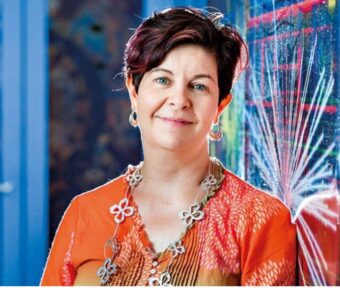
Elisabetta Barberio. Credits: Arc Center of Excellence for Dark Particle Physics
Barberio, what exactly is Saber South? And how will he try to harness the mysterious dark matter?
“Saber South It is an experiment designed to directly detect dark matter particles through the interaction of these particles with a thallium-saturated sodium iodide crystal. At the heart of Saber’s experiment are thallium-saturated sodium iodide detectors, which act like sparkling crystals. The elastic impact of a dark matter particle on one of the crystal nuclei causes the affected nucleus to bounce. This collision releases a small amount of energy (<100 keV), which is converted into light by the crystal. The light produced is measured by means of a highly efficient and sensitive optical multiplexer. The crystal and photomultipliers are enclosed within an ultra-pure copper envelope. These copper casings are then placed inside a steel container filled with a flashing fluid that acts as an active shield. Events caused by the dark matter interaction release energy only inside the crystal: all other particles also release energy into the fluorescence device. Then a passive screen made of steel and polyethylene reduces the flow of particles coming from the walls of the underground laboratory.”
What is the reason for the decision to build a plant with a depth of one kilometer?
Interactions between device cores and dark matter are very rare. If the experiments with direct detection of dark matter were placed on the surface, the interaction of cosmic rays with the device would be more frequent than the desired signal. In order to be able to see these subtle signals, we need to do direct experiments to detect dark matter in underground laboratories where the radiation from cosmic rays is very low. To further reduce background radiation, detectors are inserted into screens capable of absorbing external environmental radiation; Moreover, all materials used contain a very low level of residual radioactive pollutants.”
Word ‘SouthIn the name of the experiment suggests that away It’s also Saber’s experience.”north“. Is that correct?
“Yes, the Saber Science Program expects to install two twin detectors: one in the Northern Hemisphere, at Gran Sasso National Laboratories – Northern Saber Indeed, in Italy, and one in the Southern Hemisphere, in Stowell’s Geophysical Laboratory – Saber South, in Australia».
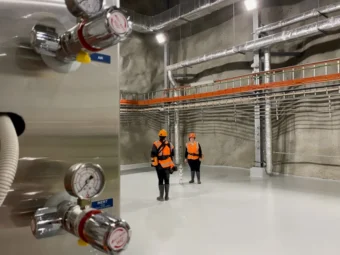
A view of the lab that will host the Saber South Experiment. Credits: Imogen Kramp
Why the need for a double desk?
The signal property of the interaction of dark matter particles with the nuclei of crystal atoms is Annual Adjustment The number of reactions observed with nuclei during the year. The adjustment is due to the annual variation of the Earth’s speed with respect to our galaxy’s reference system (with which dark matter particles are associated). The number of collisions between cores and dark matter is highest in June and lowest in December. Saber’s purpose is to discover such an annual modification using crystals of high-purity saturated thallium-sodium iodide immersed in a liquid flash device that serves as a Active veto. The radio purity of the crystals is one of the main characteristics of Saber. The use of two detectors also makes it possible to isolate any effect caused by the seasonal difference in the number of muons of cosmic origin, the formation of which has an opposite phase in both hemispheres. This seasonal effect results in an annual modification with opposite phases in the two hemispheres, on the contrary, the modification caused by dark matter has exactly the same phase in both hemispheres.”
At what stage are reagents installed? And when do you think we will have the first results?
“Double Saber detectors under construction. Saber South is expected to start taking data next year, for at least five years. Saber’s first results are expected about two years after the start of data collection. Saber – North and South – will be the first device to use Thallium-saturated sodium iodide detectors of similar or greater purity than Dhamma / LibraThe experiment conducted in the underground laboratories of Gran Sasso, which revealed a signal with temporal characteristics compatible with this modification, will be able to definitively test the measured signal.”
To learn more, gWatch the video (in English) of the Stowell Geophysics Laboratory on youtube channelARC Center of Excellence for Dark Matter:

“Devoted bacon guru. Award-winning explorer. Internet junkie. Web lover.”



